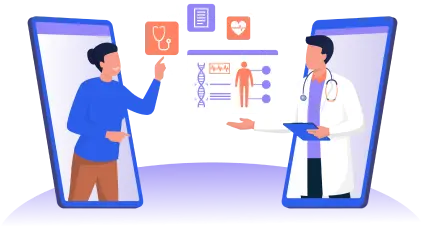Cerner HL7 Integration Services
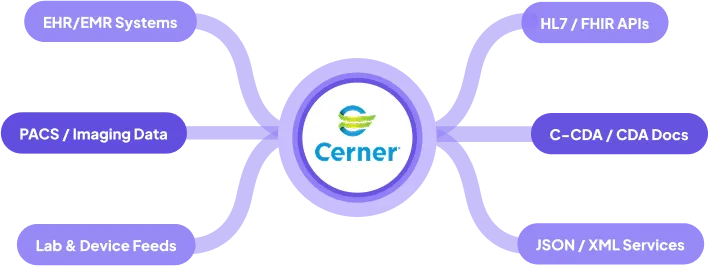
Some of Our
Many Amazing Clients








Focus on What Truly Matters: Patient Care
We Are Your Trusted Partners in Healthcare Interoperability
Effortless Data Flow with Cerner EHR Integration
- Our Cerner EHR integration facilitates seamless and secure data flow, providing doctors with fast and hassle-free access to necessary information.

Interconnected Healthcare Ecosystem with Cerner API Integration
- For patient information, Cerner API Integration links healthcare to diverse data sources, including HIEs, government registries, and provider apps.
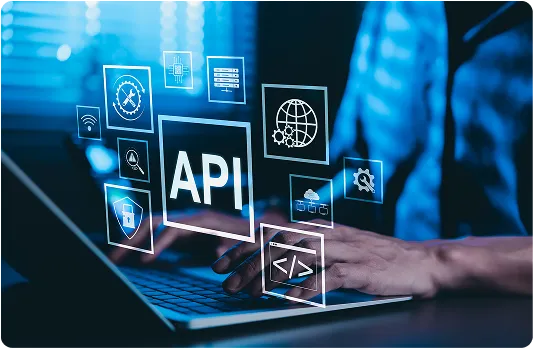
Enhanced Interoperability with Cerner API Documentation
- Cerner API documentation enables rapid usability of medical data from any source, crucial in emergencies such as car crashes, heart attacks, and gunshot wounds.
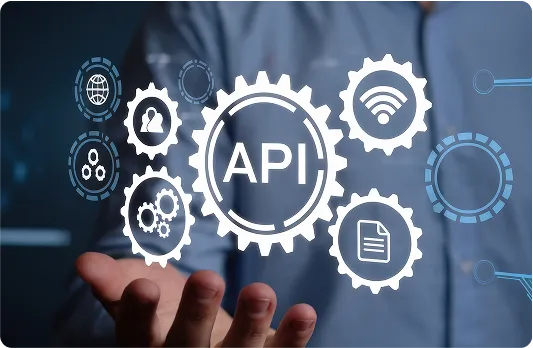
Cerner Telehealth Integration for Remote Care
- Our Cerner EHR integrates with telehealth for efficient remote care, granting access to patient history and enabling seamless prescriptions.
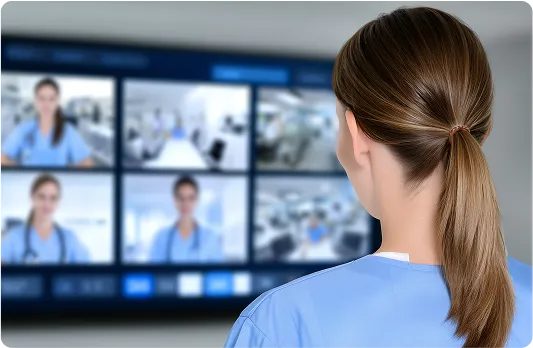
Cerner Billing System
- Integrating Cerner EHR with telemedicine ensures billing interoperability, paving the way for a complete telehealth platform for consultations and RCM.

Maximizing Interoperability with Cerner HL7 Integration
- Cerner HL7 integration and HL7 FHIR standard maximize interoperability in custom healthcare software solutions, leveraging APIs using JSON or REST technology.
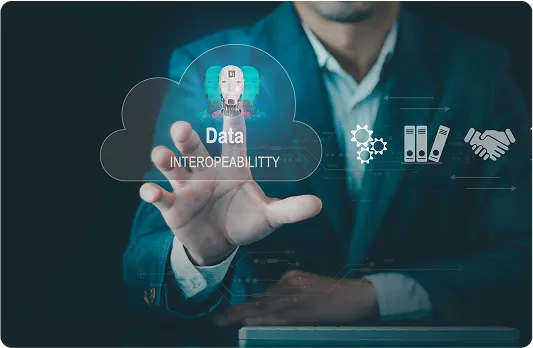
Cerner Integration for Medical Devices
- Tailored Cerner integration for medical devices like cardiac wearables, RPM apps, and fitness trackers ensures smooth data flow to EHR.
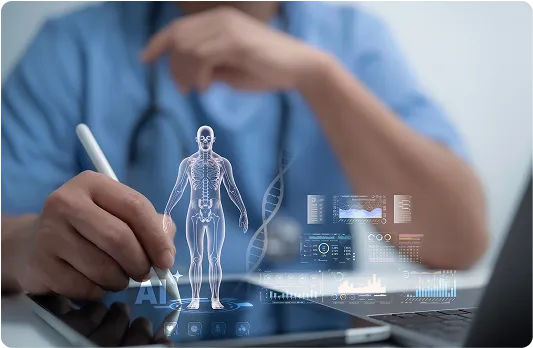
Value Delivered By Our Integration Services
Nationwide Data Access
- Access data from other organizations, government registries, and Picture Archiving and Communication Systems (PACS) for viewing radiology images, enabling more accurate diagnoses and treatment planning. Seamlessly integrate radiology imaging data with electronic health records for accurate clinical decisions.
Consolidated Clinical Data
- A single consolidated repository of clinical data to streamline workflows and reduce the time spent searching for patient information across disparate systems. Facilitate collaboration among healthcare teams by sharing discharge summaries, doctor's notes, and other critical information seamlessly.
Interconnectivity
- Connect with acute and ambulatory care centers using a single standard connection, promoting interoperability and continuity of care across different healthcare settings. Enable smoother care transitions for patients moving between different healthcare facilities.
Secure Sharing
- Connect with acute and ambulatory care centers using a single standard connection, promoting interoperability and continuity of care across different healthcare settings. Enable smoother care transitions for patients moving between different healthcare facilities.
Medication Management
- View updated medication history and access information about medication brand alternatives corresponding to each patient's health plan, reducing the risk of adverse drug interactions and medication errors. Manage prior authorizations and assess patients' usage of controlled substances more effectively.
Regulatory Compliance
- Ensure compliance with regulatory requirements and industry standards, including regulations governing prior authorizations, controlled substance prescriptions, and electronic health records.
Radiology Imaging
- Ensure compliance with regulatory requirements and industry standards, including regulations governing prior authorizations, controlled substance prescriptions, and electronic health records.
Case Studies
HL7 engine for secure lab results delivery
An HL7 integration engine that converts raw lab data into HL7 v2 messages using state-specific rules, streamlining ELR workflows, reducing costs, and enabling real-time, standardized data sharing across health departments for improved interoperability.
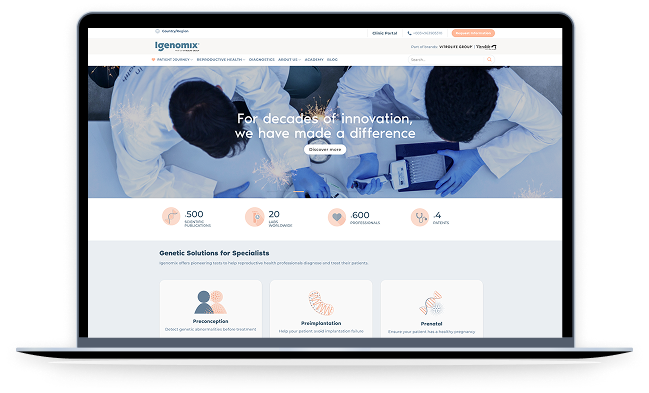
Interoperable EMR platform for Data Exchange
HipLink needed to connect EMR systems across departments for faster, more secure alerts. We developed a robust integration that reduced data silos, enhanced communication, and helped clinical teams act faster using real-time, interoperable notifications.

Our HIPPA Compliant Cerner Integration Process
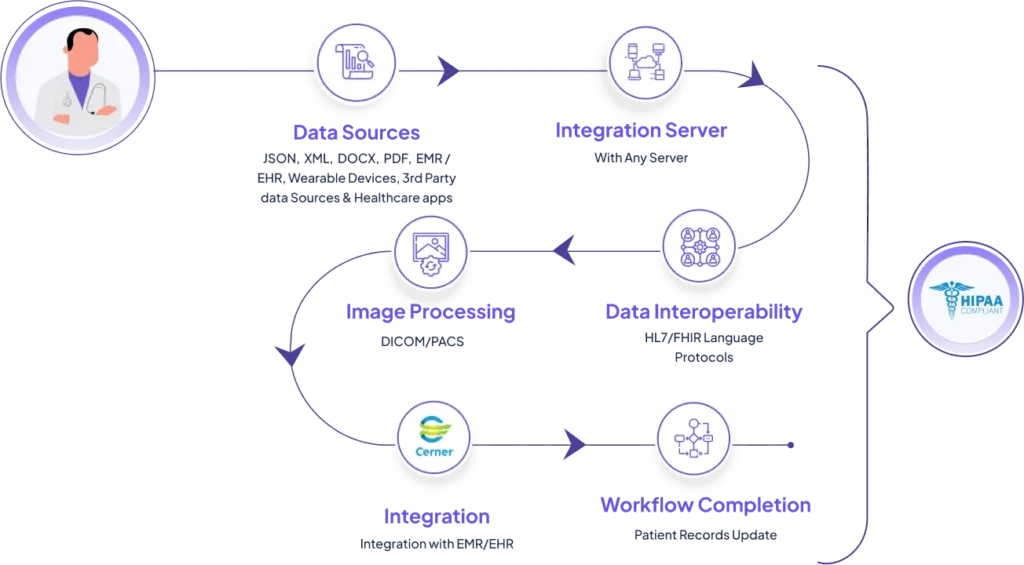
Healthcare Development Tech Stack

.Net Microsoft

Java

Python

JavaScript
Just Don’t Trust Our Word, Hear From Our Clients
Kudos to your team for outstanding work in the discovery phase! Your team understood our business and workflows by asking the right questions and extracting the most useful information. Your team's ownership and results-oriented approach are commendable.

Shaukat Zakaria
CEO at HealthQuest
I appreciate your remarkable work during the recent Laboratory service phase. Your determination, analytical thinking, and continuous efforts were crucial in overcoming challenges and achieving success. I appreciate your help as we collaborate to create fantastic items.

Maker Athian
Founder at iVision
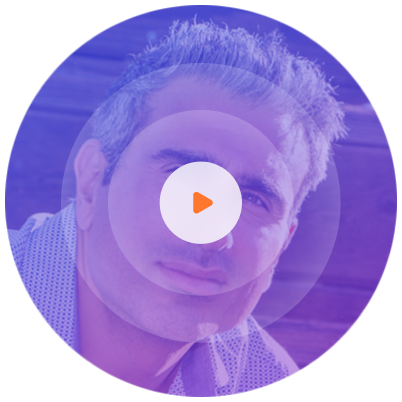

Omar Ali Midani
Co-Founder and President at PureLife Dental
Working with the folio3 team has been a great experience. Your dedication, creativity, and adaptability in overcoming challenges for the Moodology app project are truly commendable.

Azhar Ali
Director At AiGenics
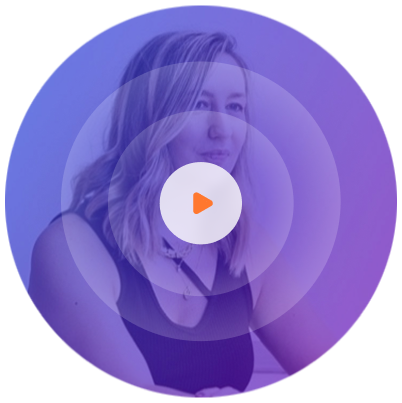

Justyna Wilson
Senior Director eCommerce and Marketing at face reality Skincare
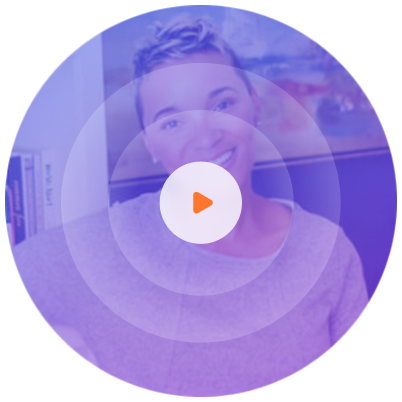

Tracey Hawkins
Founder and CEO at Thriving on the Spectrum, LLC
Team Folio3 brought my dream app to reality, they explained every step to our non technical team professionally. wireframe and design processes were outstanding & they built stunning and perfectly integrated application. I think both patients and clinic will be significantly benefited.

Elizabeth Miazga
MD FRCSC at Saint Michael's Medical Center
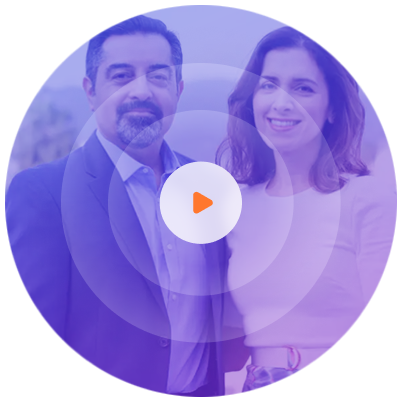

Dean and Ayesha Sherzai
Founders of The Neuro Plan
Frequently Asked Questions
Who is part of HL7 Cerner?
What is Cerner OpenLink?
What are Millennium Web Services?
Love to Hear From You, Get in Touch



